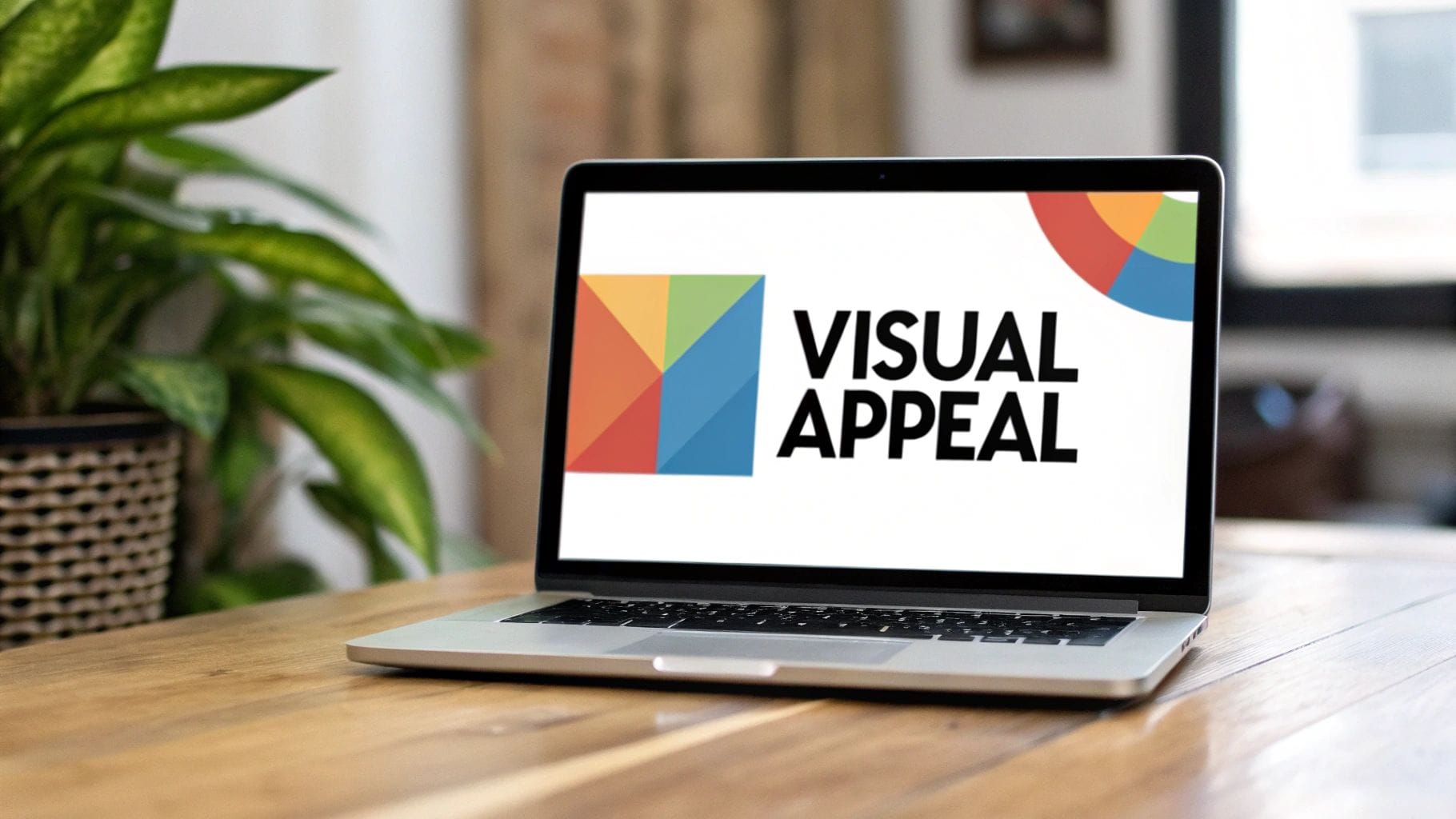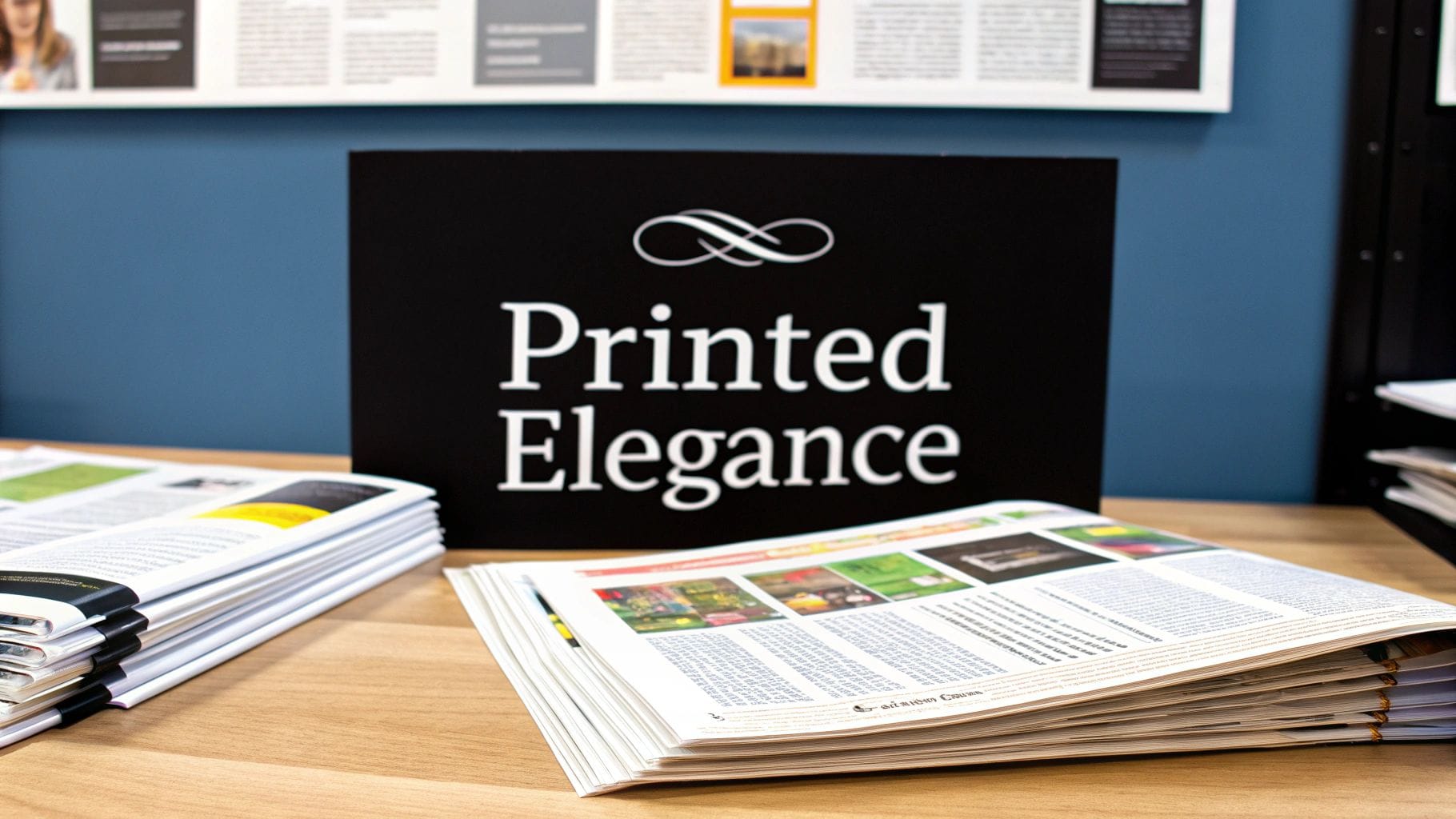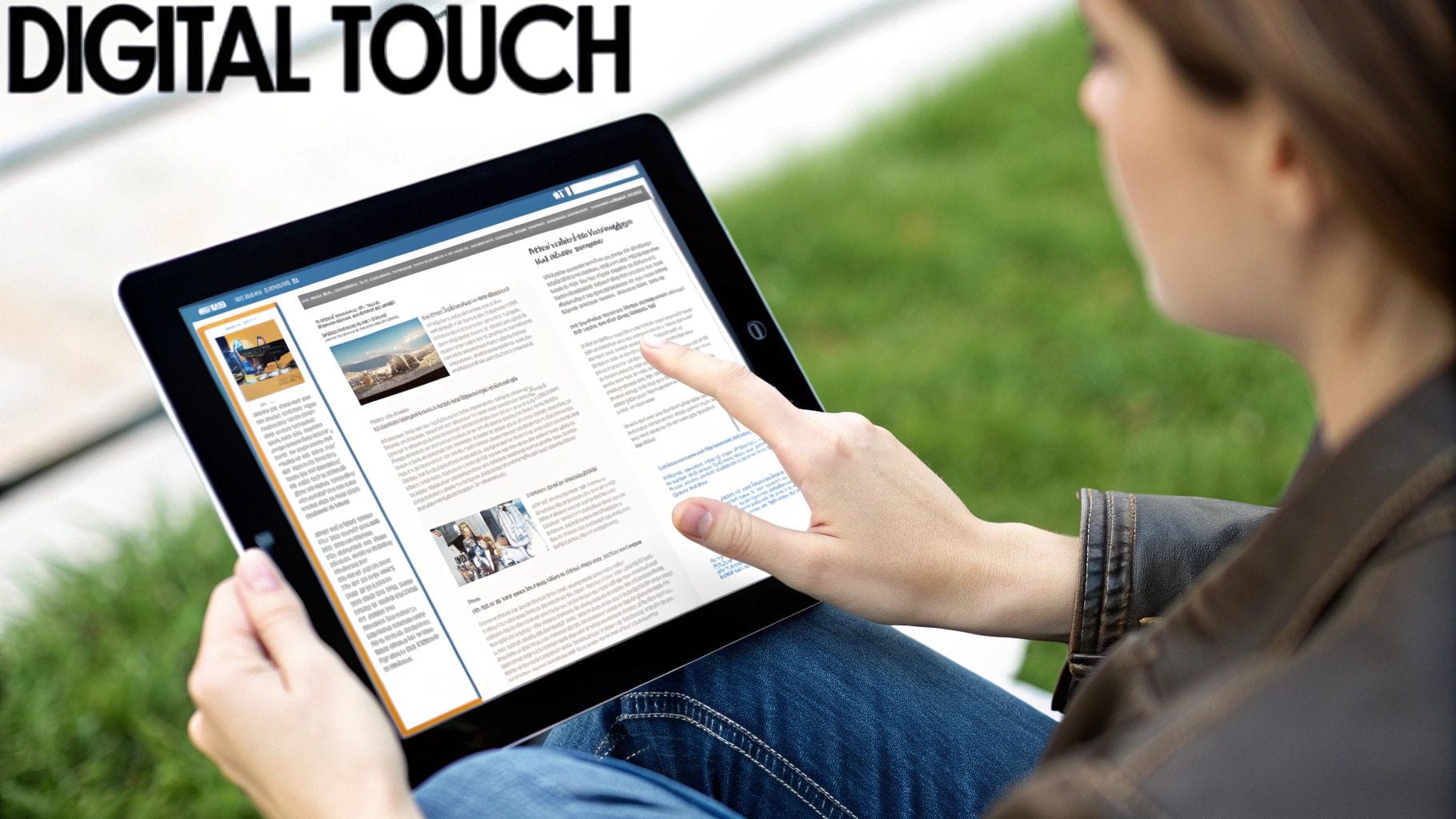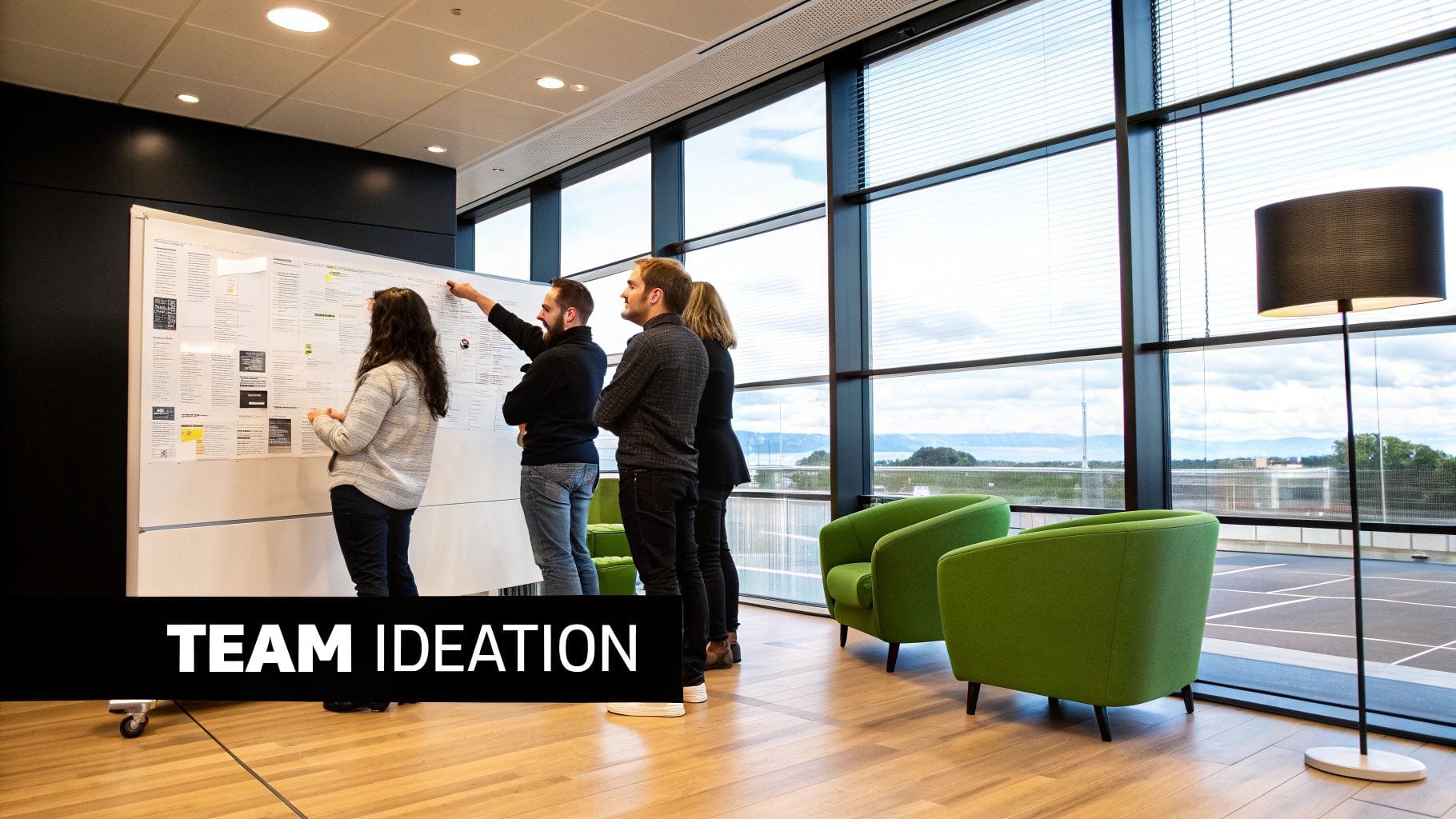10 Great Email Newsletter Design Strategies That Transform Engagement and Drive Results
10 Great Email Newsletter Designs That Transform Engagement and Drive Results
Building Personal Connections Through Smart Design

The best email newsletter designs do more than just present information - they create real connections with readers. Moving beyond basic personalization like "Dear [Name]," effective newsletters deliver content that truly matters to each subscriber. For instance, rather than showing every new product, a well-designed newsletter might highlight items based on what that specific reader has browsed or bought before. This focus on individual relevance helps newsletters stand out and build lasting relationships with subscribers.
Using Data to Create Personal Content
Good personalization starts with understanding your subscribers. By analyzing how readers engage with your emails, you can create dynamic content blocks customized for each person. This could mean showing different product recommendations, adjusting content based on past clicks, or even reorganizing the newsletter layout to emphasize what matters most to that subscriber. With this targeted approach, you can make sure your message connects with the right person at just the right moment.
Breaking Down Your Audience for Better Results
The key to effective personalization is dividing your subscriber list into focused groups. When you segment your audience based on shared traits, you can tailor content more precisely to their interests. As an example, a clothing retailer might create different versions for men, women, or various style preferences, making sure each group sees relevant products and offers. This targeted strategy helps subscribers feel understood and valued, turning routine emails into stronger customer relationships. For more insights, check out How to master newsletter email design.
Real Examples of Personal Design at Work
Many top brands are seeing great results from personalized newsletter designs. Think about how music services create weekly playlists based on your listening history, or how online bookstores suggest new titles that match your past purchases. Some companies take it further by adding interactive elements like polls or quizzes, which both personalize the experience and help gather useful subscriber data.
What Personalized Newsletters Can Do
Benefit | Description |
|---|---|
Increased Open Rates | Personalized subject lines and content pique subscriber interest, leading to higher open rates and greater visibility. |
Improved Click-Through Rates | Tailored content and relevant calls to action encourage subscribers to click through and explore offerings, boosting conversions. |
Stronger Customer Loyalty | Personalized experiences foster a sense of connection and appreciation, leading to increased customer loyalty and brand advocacy. |
Enhanced Brand Engagement | Interactive elements and personalized content encourage subscribers to spend more time with the newsletter, deepening engagement. |
These personal touches are helping brands build stronger connections and run more successful email campaigns that truly resonate with their audiences.
Crafting Mobile-First Experiences That Convert
With over 60% of emails now opened on mobile devices, creating email newsletters that look and work great on phones is no longer optional - it's essential. A truly mobile-first approach goes beyond simply shrinking desktop designs and requires carefully considering how people actually use their mobile devices.
Designing for Thumbs and Tiny Screens
The way people physically interact with phones should guide your mobile design choices. Since most users navigate with their thumbs, key elements like buttons need adequate size and spacing to prevent mis-taps. Layouts should flow naturally with minimal scrolling required. Single-column designs often work best on mobile, making content easy to scan and digest. You might be interested in: Impactful Email Newsletter Format for 2024.
Optimizing Images and Load Times
While visuals boost engagement, large image files can severely impact mobile load times. Nobody wants to wait for a newsletter to load on a spotty connection. Properly optimizing images by compressing file sizes while maintaining quality ensures your newsletter loads quickly and smoothly. Using responsive design frameworks also helps images scale correctly across different screen sizes without awkward cropping or distortion.
The Power of Responsive Design
Like a chameleon changing colors, responsive design automatically adapts your newsletter to display perfectly whether viewed on a tiny phone or massive monitor. This flexibility maintains your brand's look and feel across all devices. More than just a technical feature, responsive design creates a consistently excellent experience no matter how subscribers access your content.
Real-World Impact: Mobile Transformations That Work
The benefits of mobile optimization are clear in real examples. After simplifying their newsletter layout for mobile viewing, one company saw click-through rates double as subscribers found it easier to navigate and engage with content. Another brand dramatically reduced bounce rates by optimizing image loading, keeping readers engaged instead of abandoning slow-loading emails. These results show how focusing on mobile experience directly impacts newsletter success.

Transforming Engagement Through Interactive Design

Email newsletters are evolving beyond basic personalization and mobile optimization to create truly engaging experiences for subscribers. The most successful newsletters now incorporate interactive elements that actively involve readers rather than just presenting static content. This shift represents an important development in how brands connect with their audience through email.
Implementing Interactive Elements for Enhanced Engagement
Adding interactive components can turn passive newsletter reading into an active dialogue with subscribers. Polls and surveys embedded directly in emails let readers share their opinions while providing valuable feedback to senders. This two-way interaction helps build community and makes subscribers feel their input matters. Interactive images like shoppable photos or information-revealing hotspots encourage exploration within the email itself. Studies show these engaging elements can boost open rates up to 30% and keep readers interacting longer with newsletter content.
Gamification: Adding a Touch of Play to Your Newsletter
Taking interactivity further, gamification brings elements of play and rewards to newsletters through quizzes, mini-games, and progress tracking. Making emails more fun and engaging can significantly increase subscriber interest and create memorable experiences. Check out more information here: The benefits of interactive emails. However, it's important that any game elements match your brand voice and target audience - overly complex or irrelevant games may frustrate readers and lead to unsubscribes.
Navigating Technical Limitations and Creative Workarounds
While interactive features offer exciting possibilities, email client limitations require careful consideration. Not all platforms support advanced interactivity, and elements like embedded video may display incorrectly. Design teams must find creative solutions, such as using animated GIFs or cinemagraphs to add visual interest even in more basic email clients. Including fallback content ensures all subscribers have a good experience regardless of technical constraints.
Striking the Right Balance: Deliverability and Design
Successful interactive design requires balancing engaging features with reliable delivery. Complex code and large file sizes can trigger spam filters, preventing newsletters from reaching inboxes. Careful optimization through clean code, appropriate image sizes, and thorough testing across email clients helps maximize both visual appeal and deliverability rates. This balanced approach ensures your creative content actually reaches subscribers while providing the engaging experience they expect.
Designing for Different Audience Segments
Great email newsletter designs start with understanding your audience. Since different groups of subscribers have their own unique needs and preferences, taking a personalized approach is essential. For example, younger audiences may engage more with bold visuals and interactive elements, while business professionals often prefer clean, straightforward designs that prioritize efficiency.
Understanding Your Audience Segments
Getting to know your different audience groups requires thorough analysis beyond basic demographics. Look at the data showing which content gets the most engagement from each segment - what articles they read, products they buy, and links they click. Running subscriber surveys can also provide direct feedback about preferences. Use these insights to build detailed subscriber personas that guide your design choices for each key audience group.
Tailoring Design Elements to Specific Groups
Once you understand what resonates with each segment, you can customize design elements accordingly. This includes picking appropriate color schemes, typography, image styles and layouts that match each group's aesthetic sensibilities. For example, an outdoor lifestyle newsletter might use earthy colors and nature photography, while a tech newsletter could feature sleek minimalist design. These thoughtful choices help create visual appeal while staying true to your brand identity across segments. Learn more in our article about the importance of newsletter branding.
Creating Flexible Templates for Customization
Building flexible templates makes it practical to maintain multiple newsletter versions. Your templates should allow easy swapping of key design elements like headers, colors, and content blocks without requiring extensive code changes. Think of it like having a versatile wardrobe where you can mix and match pieces to create different looks, while keeping a consistent style. This approach lets you efficiently customize newsletters for different segments.
Measuring and Iterating Based on Performance Data
Design for different audiences is an ongoing process driven by data. Track metrics like open rates, click-throughs, and conversions for each segment to see what works best. Use these insights to refine your designs and segmentation over time. For instance, if video content drives strong engagement with a particular group, you can feature more video in their newsletters. This data-informed approach helps you keep improving and delivering newsletters that resonate with your diverse audience.
Mastering Technical Excellence in Newsletter Design

Creating outstanding email newsletter designs requires more than just an eye for visuals and engaging content. The foundation lies in solid technical know-how - understanding how different email clients display HTML, properly optimizing images, and ensuring newsletters work well for every subscriber. Getting these technical aspects right is essential for your designs to have maximum impact.
Optimizing Images for Performance and Impact
With over 60% of emails now opened on mobile devices, image optimization is critical. Large image files can seriously slow down load times and frustrate subscribers trying to view your newsletter on their phones. The solution? Compress images thoughtfully to reduce file size while maintaining quality. Don't forget to add descriptive alt text - this helps visually impaired subscribers and provides context if images fail to load. These small but important details create a smooth experience that works for everyone.
Ensuring Accessibility for All Subscribers
Making newsletters accessible isn't just good practice - it's essential for connecting with your full audience. Many subscribers use screen readers or have visual impairments, so your design needs to work for them too. Use proper HTML structure with clear headings and lists, ensure text contrasts well with backgrounds, and organize content logically. When you design with accessibility in mind, you create newsletters that truly work for everyone.
Testing and Troubleshooting Across Email Clients
One major challenge in email design is getting newsletters to display consistently across different email platforms. Outlook, Gmail, and Apple Mail each handle HTML and CSS differently, which can lead to broken layouts and messy formatting. Thorough testing is key - platforms like Litmus and Email on Acid let you preview how your design will look across email clients so you can catch and fix issues before sending. This attention to detail keeps your newsletters looking polished no matter how subscribers view them.
Maintaining Consistent Rendering With Inline CSS
Unlike websites, many email clients strip out external CSS stylesheets. That's why inline CSS - adding style rules directly to HTML elements - is so important for newsletters. While this makes code longer, it's the most reliable way to control how your newsletter looks across different email platforms. Getting the technical details right leads directly to a better subscriber experience and helps your email marketing succeed.
Measuring and Optimizing Design Performance
Implementing great newsletter design techniques is just the first step. To create truly impactful newsletters, you need to understand what's working and continuously refine your approach based on data. Let's explore how to measure and optimize your newsletter design for maximum effectiveness.
Key Metrics for Evaluating Newsletter Design
The foundation of data-driven design optimization is identifying and tracking the right metrics. While open rates can indicate how well your subject lines perform, click-through rates (CTRs) reveal if your content actually engages readers. For example, a newsletter with high opens but low clicks likely means you have compelling subject lines but the content itself needs work. Looking at conversion rates for specific actions like purchases or sign-ups shows how well your calls-to-action drive results. Rather than fixating on any single metric, take a comprehensive view of how subscribers interact with your newsletter.
A/B Testing: The Cornerstone of Design Improvement
A/B testing lets you systematically improve your newsletter design by comparing different elements to see what resonates with readers. You can test variations of headers, button placement, color schemes, and other design components. For instance, you might test whether a prominent hero image outperforms a text-heavy header. By measuring the performance of each variant, you can identify what drives engagement and continually enhance your design.
Analyzing Engagement Patterns: Beyond the Click
While click rates matter, truly understanding reader behavior requires looking deeper at engagement patterns. This includes metrics like how far people scroll, time spent reading, and which specific links get clicked most often. For example, if you notice readers consistently engage with content in a certain section, that signals what type of information they find valuable. High bounce rates could mean a mismatch between what subscribers expect and what you deliver. Read also: Optimizing Email List Growth Rate - Email Marketing Metrics for more insights.
Implementing Continuous Improvement Processes
Design optimization works best as an ongoing effort, not a one-time fix. This requires regularly reviewing performance data, identifying improvement opportunities, and running A/B tests to enhance your design. Like a gardener who adjusts their approach based on how plants respond, you need to consistently monitor results and refine your newsletter design to keep it fresh and engaging for subscribers.
Real-World Examples of Design Optimizations
Companies have seen impressive results from data-driven design improvements. One brand increased click-through rates 40% simply by moving their call-to-action button location. Another improved conversions substantially by simplifying their layout to help readers find key content more easily. These cases show how even small, strategic changes based on data can significantly boost performance.
Looking to take your newsletter performance to the next level? Inagiffy handles everything from design and content to optimization and deliverability. Start seeing better results with Inagiffy's complete newsletter solution. Visit inagiffy.news today to learn more.
Comments
Your comment has been submitted successfully!